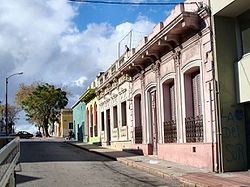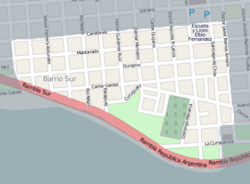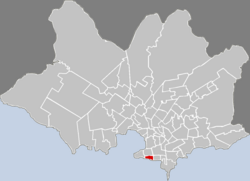Barrio Sur | |
|---|---|
 Street in Barrio Sur | |
 Street map of Barrio Sur | |
 Location of Barrio Sur in Montevideo | |
| Coordinates: 34°54′46″S56°11′19″W / 34.91278°S 56.18861°W | |
| Country | |
| Department | Montevideo Department |
| City | Montevideo |
Barrio Sur is a barrio (neighbourhood or district) of Montevideo, Uruguay. It borders Ciudad Vieja to the west, the central business district to the north, Palermo to the east and the coastline to the south.
Contents
Politically located in the Municipality B, along with Palermo, it is the place where most of the Uruguayan Carnival festivities take place. [1] In the first half of the 20th century, the neighbourhood became a melting pot of different cultures, due to the immigrants who settled in the area.

